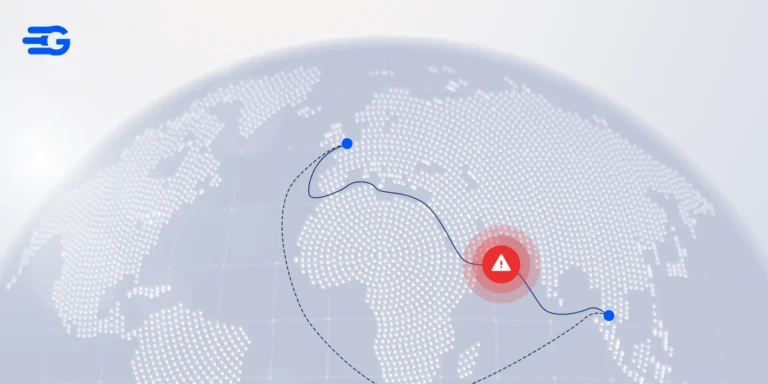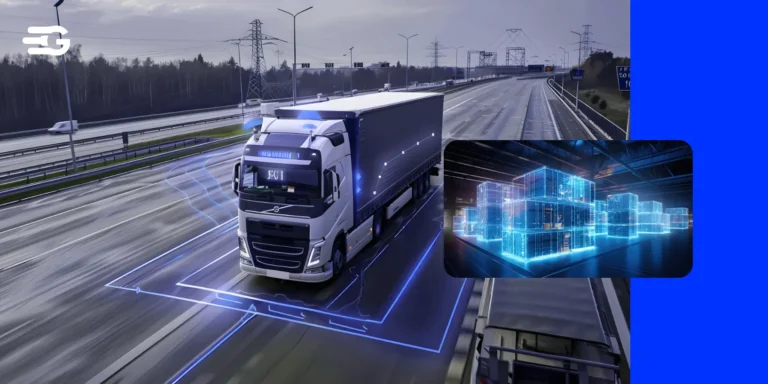Optimizing Your Supply Chain with Effective Inbound Transportation Management
In today’s competitive landscape, the efficient management of inbound product flow is paramount for businesses handling physical goods. Ineffective coordination, limited visibility, and fragmented processes can lead to operational chaos, costly delays, and dissatisfied customers. By mastering inbound transportation management, organizations can revolutionize their supply chains.
Through streamlined operations, significant cost reductions, and fortified supplier partnerships, businesses can achieve unparalleled control, ultimately delivering exceptional customer experiences.
What is Inbound Transportation Management?
Inbound transportation management is the strategic process of overseeing and optimizing the flow of goods from suppliers into a company’s facilities. This encompasses a wide range of activities, including route planning, freight scheduling, carrier selection, and the efficient transfer of products from vendors.
By effectively managing these inbound logistics, businesses can significantly enhance operational efficiency, reduce costs, and ensure a consistent supply of materials to meet customer demand. In essence, it’s the bedrock of a robust and responsive supply chain.
Key Components of Inbound Transportation Management
Understanding Inbound Logistics
To better grasp the scope, let’s first define inbound logistics. This term covers the specific procedures and physical movements involved in receiving goods into a company’s distribution centers, warehouses, stores, or other locations from external suppliers.
It includes the transportation footprint of getting products to their final destination, unloading them from trucks or containers, checking and auditing shipments against orders, updating inventory data in systems, transferring items to proper storage areas, and managing items through putaway, replenishment, and fulfillment processes.
Core Functions of Inbound Transportation Management
With that context established, we can explore the core workforce and technological capabilities required for excellence in inbound transportation management, which include:
1. Transportation Planning and Optimization – Determining the most cost-efficient routes, modes of transit, logistics partners, and shipment schedules for moving products while maximizing asset utilization and minimizing expenses. Advanced modeling explores innumerable permutations to identify the optimal plan.
2. Freight Scheduling and Visibility – Coordinating the precise timing of inbound shipment arrivals based on labor availability, warehouse space, equipment needs, and real-time order forecasting. End-to-end tracking provides transparency into each load’s progress across its journey.
3. Carrier Sourcing and Management – Selecting reliable, high-performing logistics providers through strategic sourcing best practices and scorecarding. Experts handle rate negotiation, freight audit and payment, claims management, and nurturing collaborative relationships.
Benefits of Effective Inbound Transportation Management
Cost Reduction and Operational Efficiency
As operations become leaner and more precise by properly managing inbound transportation, the cost savings and efficiency gains are massive:
Transportation Spend Plunges – Optimizing routing guides, pooling shipments, curating the optimal carrier mix, and maximizing asset utilization through advanced load planning and execution.
Warehouse Productivity Soars – Without the chaos of missed deliveries or inventory imbalances, receiving and downstream processes hum along at peak performance with shipments arriving exactly when and how they’re needed.
Customer Service Levels Improve – With full visibility into orders and the ability to dynamically adapt to delays or disruptions, companies consistently meet or exceed on-time delivery promises.
Improved Supplier Collaboration and Inventory Management
Beyond streamlining operations, a command of inbound logistics generates additional strategic business benefits:
Robust Supplier Relationships – Collaborative planning and cloud-based visibility tools synchronized with vendor processes facilitate a true partnership founded on accountability and mutual incentives.
Accurate Inventory Positioning – Rather than grappling with uncertain lead times or unreliable deliveries causing stock imbalances or shortages, companies maintain ideal inventory positions aligned with demand.
Cash Flow Optimization – With reliable supplier performance and precise inventory control, businesses can optimize working capital deployment while avoiding revenue leaks.
Strategies for Optimizing Inbound Transportation Management
Leveraging Technology as an Enabler
While process excellence is important, leveraging cutting-edge supply chain software provides the critical technological backbone for inbound transportation management. Robust transportation management systems (TMS) like GoComet’s empower companies by:
- Automating Scheduling – Using AI and machine learning algorithms to continuously optimize shipment schedules accounting for real-time intelligence on supplier lead times, warehouse capacities, demand forecasts, and more.
- Furnishing Shipment Visibility – Integrating with carrier systems and scanning technologies to capture real-time milestone updates as goods move through the supply chain, from pickup to consolidation to final delivery.
- Modeling “What-If” Scenarios – With control tower-like visibility and predictive analytics capabilities, companies can conduct scenario planning to stress test routing guides, collaborate with vendors, and develop contingency plans.
Employing Proven Best Practice Processes
Technology alone is insufficient. Robust processes, enablers, and leading practices are equally essential, such as:
Establishing Vendor Compliance Programs – Setting and stringently enforcing policies around supplier labeling, documentation, appointment scheduling, loading requirements, and on-time performance. Scorecarding tools identify areas for vendor coaching or stratification.
Fostering Collaboration with Suppliers – Sharing data, developing joint incentive frameworks, and directly coordinating inbound logistics planning with critical vendors as true strategic partners.
Aligning Organizations Cross-Functionally – Breaking down silos and misaligned incentives among transportation, procurement, receiving, inventory management, and other departments that influence supply chain efficiency.
Measuring Performance and Continuous Improvement – Identifying and monitoring key performance indicators like freight spend, order cycle times, and claims ratios to surface opportunities. A culture of continuous improvement closes gaps.
GoComet offers a comprehensive approach to supply chain optimization. By establishing robust vendor partnerships and fostering cross-functional collaboration, we guide organizations in implementing best practices that align with their unique business goals.
Challenges in Inbound Transportation Management
Identifying Common Obstacles
As powerful as the rewards of effective inbound transportation management can be, it’s not an undertaking without significant challenges. Common obstacles include:
- Variable lead times from suppliers
- Frequent disruptions and delays
- Increasing supply chain complexity
- Globalization and compliance challenges
- Unpredictable external factors (e.g., weather, port congestion, equipment failures)
Solutions and Mitigation Strategies
To build a resilient and agile inbound logistics operation, organizations must develop critical capabilities. Solutions like those offered by GoComet empower businesses to overcome common obstacles such as:
Prioritizing End-to-End Supply Chain Visibility – Complete transparency across all inbound logistics activities through digitization and data unification allows companies to proactively identify exceptions and resolve issues before they snowball.
Enabling Real-Time Adaptability and Responsiveness – With visibility, optimized analytics, and collaborative response management, teams can dynamically adjust transportation plans and reallocate inventory or resources as needed when disruptions occur.
Robust Scenario Modeling and Contingency Planning – Using digital twins and “what-if” simulations, companies can model the impacts of potential disruptions and determine the ideal mitigation and backup plans in advance.
The Future of Inbound Transportation Management
Emerging Innovations and Industry Trends
The increasing globalization and complexity of supply chains demand continuous evolution of inbound logistics strategies to stay competitive. While predicting the future is challenging, certain transformative trends are already emerging:
Internet of Things Proliferation – Pervasive sensor networks blanketing shipments, equipment, containers, and facilities with real-time monitoring and data capture across an interconnected ecosystem.
Machine Learning Breakthroughs – Advanced algorithms are automating routine planning and decision-making while intelligently uncovering optimization opportunities and prescriptive insights from data.
Rise of Autonomous Logistics – Self-driving trucks, drones, robotics process automation, and other forms of autonomy pushing efficiency, safety, and performance further.
Sustainable Logistics Imperatives – Prioritizing environmental stewardship and sustainability by transitioning towards lower emission modes, route optimizations, and circular supply chain principles.
Don’t be left behind. Partner with GoComet to harness the power of emerging technologies. Our experts will guide you in exploring and implementing cutting-edge solutions like IoT, machine learning, and autonomous logistics to revolutionize your inbound operations.
Enhancing Supply Chain Competitiveness through Inbound Transportation Management
In today’s fast-paced, customer-centric business world, effective inbound transportation management is no longer just a strategic advantage—it’s a necessity for survival. Organizations that excel in this area will reap significant rewards, including:
Cost and Asset Optimization – By relentlessly pursuing opportunities to reduce transportation costs through route optimization, mode selection, asset utilization improvements, and strategic carrier management and sourcing. Cash is conserved.
Reliability and Speed of Delivery – With complete visibility across your inbound supply chain and the agility to dynamically adjust plans, you consistently provide fast and reliable delivery of products with minimal delays or disruptions impacting customers.
Elevated Inventory Efficiency – Accurate, real-time data synchronization between transportation, warehousing, and other nodes enables ideal inventory positioning and turns by aligning supply and demand signals. Working capital is unlocked.
Differentiated Customer Experience – Ultimately, by ensuring reliable availability and rapid replenishment of products through proactive logistics management, you deliver the seamless omnichannel customer experience that drives loyalty and retention.
With those competencies in your organizational arsenal, you’ll be armed to grow revenues profitably, capture market share, and consistently outservice competitors. Inbound logistics mastery provides the critical infrastructure for holistic supply chain excellence.
Potential next steps include exploring opportunities like:
- Transportation management system enhancements or implementing complementary logistics software
- Restructuring your logistics network and distribution center footprint
- Reevaluating core carriers and partnerships
- Piloting emerging technologies like the Internet of Things or autonomous logistics
- Revamping metrics and launching continuous improvement initiatives
- And much more, depending on your unique situation
No matter where you are today, identifying and executing on these optimization initiatives allows you to continually elevate performance.
Accelerating Your Transformation
Recognizing the immense strategic value of optimized inbound logistics, many organizations seek external expertise to drive transformation. GoComet offers a proven approach, combining deep industry knowledge with practical implementation strategies. By partnering with our supply chain consultants, you can:
- Develop an actionable, prioritized strategic roadmap for enhancing transportation management
- Capitalize on opportunities you may be overlooking by obtaining a fresh, experienced perspective
- Access cutting-edge analytical tools, benchmarks, and models to pressure test scenarios
- Mitigate risk by leveraging change management expertise and lessons learned
- And ultimately, accelerate your timeline to realizing operational and financial impacts
Whether you choose to embark on this journey alone or seek the guidance of experts, optimizing your inbound transportation management is non-negotiable. By investing in a resilient and scalable supply chain today, you’re laying the groundwork for long-term growth and success.
Getting Started on Optimization
Do you have full visibility and control over your inbound logistics costs and operations? If you suspect hidden inefficiencies or untapped savings potential, it’s time to take action.
GoComet’s logistics experts offer a data-driven approach to transforming your inbound supply chain. We’ll conduct a thorough assessment, identify improvement areas, and develop a customized strategy to optimize your operations. Our commitment to partnership ensures shared accountability for achieving measurable results.
Suboptimal inbound logistics hindering growth? Let GoComet transform your supply chain and unlock your full potential.






